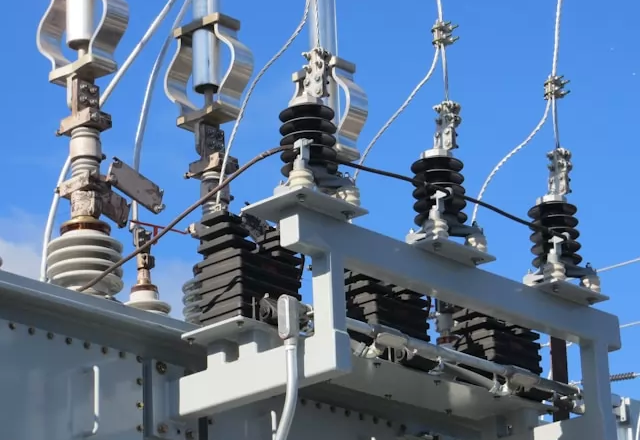Electrical Power System Protection Training 1st – 5th September 2025 (Weekdays)
- Description
- Reviews
Introduction:
Electrical Power System Protection Training is designed to provide knowledge and skills to professionals working in electrical engineering and power systems. It focuses on safeguarding electrical systems from faults, minimizing damage, and ensuring reliable power delivery.
Course Content
1. Understanding Power System Faults and Disturbances
– Identify different types of faults (short circuits, ground faults, overloads) and their causes.
– Assess the impact of faults on power systems, including equipment damage and system instability.
2. Fundamentals of Protection Systems
– Comprehend the role of protection systems in electrical grids to safeguard equipment and ensure reliable power supply.
– Learn the principles of various protection mechanisms (overcurrent, differential, distance, etc.).
3. Protection Devices and Relays
– Understand the operation and applications of different protection relays (electromechanical, static, digital).
– Gain expertise in selecting appropriate relays for specific components like transformers, generators, and transmission lines.
4. Coordination and Grading of Protection Systems
– Learn how to coordinate protection systems to ensure selective tripping and minimal disruption during faults.
– Study time-current characteristics and settings for relay coordination and protection grading.
5. Operation of Circuit Breakers and Switchgear
– Gain knowledge of different types of circuit breakers (air, oil, SF6, vacuum) and their role in protection systems.
– Learn maintenance and testing procedures for circuit breakers and switchgear to ensure reliability.
6. Design and Implementation of Protection Schemes
– Understand how to design protection schemes for various components, including generators, transformers, transmission lines, and busbars.
– Develop skills in applying appropriate protection strategies for different types of faults and operational conditions.
7. Communication Protocols in Protection Systems
– Study the role of communication networks in modern protection systems.
– Understand the integration of protocols like IEC 61850 in substation automation and protection system communication.
8. Fault Analysis and System Studies
– Learn methods for analyzing power system faults and disturbances.
– Use fault analysis tools and software to diagnose issues and optimize protection schemes.
9. Testing, Maintenance, and Commissioning of Protection Systems
– Develop practical skills for testing, calibrating, and commissioning protection devices, including relays and circuit breakers.
– Understand diagnostic and troubleshooting techniques for protection systems.
10. Advanced and Emerging Protection Technologies
– Explore advancements in power system protection, including smart grid technologies and renewable energy integration.
– Study adaptive protection systems and the impact of distributed generation on traditional protection schemes
11. Safety and Reliability of Electrical Power Systems
– Learn how to maintain system stability and reliability through proper design and maintenance of protection systems.
– Understand safety protocols and best practices when dealing with high-voltage equipment and protection systems.
12. Problem-Solving and Decision-Making Skills
– Improve decision-making abilities in real-time fault conditions and protective device operations.
– Learn how to address complex protection challenges in large, interconnected networks.
By the end of the course, participants should be able to design, test, and maintain effective protection systems, ensuring the safety, stability, and reliability of electrical power networks.
Course Content
1. Introduction to Power System Protection
– Importance of power system protection
– Overview of power system components (generation, transmission, distribution)
– Types of faults in power systems (short circuits, ground faults, open circuits, etc.)
– Protection zones and protection philosophies (unit vs. non-unit protection)
– Key terminologies in protection (reliability, selectivity, sensitivity, speed)
2. Fundamentals of Electrical Power Systems
– Power system structure and components
– Single-line diagrams and per-unit systems
– Power system stability and fault analysis
– Circuit breakers, isolators, and fuses
3. Protective Relays
– Introduction to relays and their functions
– Types of relays (electromechanical, solid-state, numerical)
– Working principles of protective relays (overcurrent, differential, distance, and directional relays)
– Relay coordination and selectivity
– Relay settings and calibration
4. Protection Schemes for Various Power System Components
– Generator Protection:
– Differential protection
– Stator ground fault protection
– Rotor earth fault protection
– Loss of excitation and over/under frequency protection
– Transformer Protection:
– Differential protection
– Overcurrent and earth fault protection
– Buchholz relay protection
– Thermal protection
– Transmission Line Protection:
– Overcurrent and earth fault protection
– Distance protection
– Directional overcurrent protection
– Pilot protection schemes (carrier-aided, optical fiber communication)
– Busbar Protection:
– Differential protection schemes
– High-impedance and low-impedance protection
– Backup protection schemes
– Motor Protection:
– Overcurrent and thermal overload protection
– Ground fault and phase failure protection
– Motor start-up protection
5. Circuit Breakers and Switching Devices
– Types of circuit breakers (air, oil, vacuum, SF6)
– Working principles and characteristics of circuit breakers
– Breaker coordination with protection relays
– Arc extinction methods
– Arc extinction methods
6. Fault Analysis and Calculation
– Types of faults (symmetrical and asymmetrical faults)
– Fault current calculations (using symmetrical components and per-unit systems)
– Impacts of faults on power systems
– Protection requirements for various fault types
7. Coordination of Protection Systems
– Relay coordination principles (time-current characteristics)
– Overlapping protection zones
– Coordination of fuses, relays, and circuit breakers
– Coordination of primary and backup protection
8. Advanced Protection Techniques
– Adaptive and smart protection systems
– Wide-area protection schemes
– IEC 61850 and Substation Automation Systems (SAS)
– Phasor Measurement Units (PMUs) in protection
– Digital protection relays and microprocessor-based systems
9. Testing, Commissioning, and Maintenance of Protection Systems
– Testing of protective relays (secondary injection testing, primary testing)
– Commissioning procedures for protection equipment
– Maintenance and troubleshooting of protection systems
– Health monitoring of protection systems and predictive maintenance
10. Case Studies and Practical Applications
– Real-world examples of power system failures and protection response
– Practical relay coordination and fault analysis exercises
– Protection system optimization for energy systems (renewables, microgrids)
– Industrial case studies (industrial power systems, utility grids)
11. Standards and Regulations in Power System Protection
– Overview of international standards (IEEE, IEC, ANSI)
– National and local standards governing power system protection
– Compliance and regulatory requirements
12. Future Trends in Power System Protection
– Role of Artificial Intelligence (AI) and Machine Learning (ML) in protection systems
– Protection challenges in renewable energy integration (wind, solar)
– Protection in smart grids and microgrids
– Cybersecurity in protection systems
The course may also include hands-on lab sessions, simulations, and use of power system software like ETAP or DIgSILENTPowerFactory for relay coordination, fault analysis, and protection system design.





